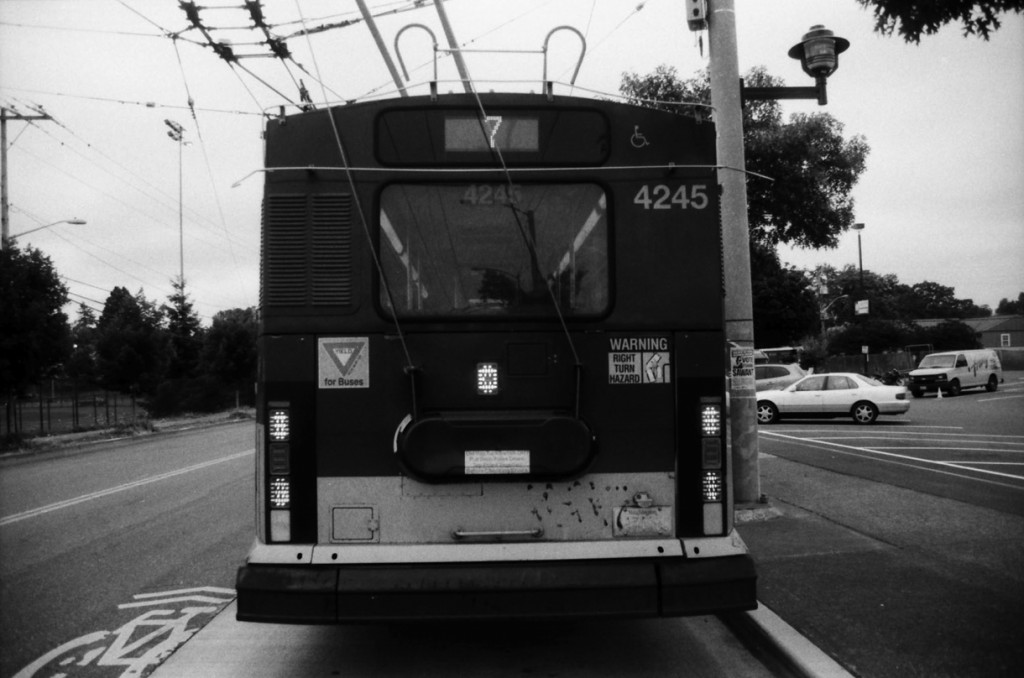I try to avoid turning my stories into soapboxing opportunities, and for that reason they’re rarely topical in the “breaking news” sense, but I’m compelled to address an issue a number of people have been asking me, and which you may be curious about.
Because I drive the “black” bus, people want to know how people are reacting to the Ferguson decision. There aren’t any white people on the 7 during most of the hours I drive it; what’s the general angle of conversation on the subject, in this, the most educated city in the US?*
Heuristic evidence tells me the general angle is perhaps not the outrage that the media reportage of protests might wish us to think. The general angle I get is that of thoughtful consideration. Just about everyone I’ve listened to has been able to read past the headline and understand that the Grand Jury’s decision is in fact not a legal license to kill black people or a desecration of all that America is supposed to stand for–yes, those was my initial knee-jerk responses–but rather an acknowledgement of a complex situation with multiple ambiguities and moving parts.
While what look like bored clumps of white teenagers** wandering around outside in the street, “protesting,” blocking nothing at night except blue-collar folk wishing to go home, my passengers of color look on in either amusement or mild frustration. They turn to myself and each other and ponder the shooting. An ex-military man with experience in high-pressure situations noted that such circumstances have half-lives not of weeks or months, but of seconds. Death is larger than race, and you don’t think when you’re in situations like that. You react.
Then there is the question of conflicting testimonies. Did Mr. Brown turn around? Was he running forward? What about his friend, Mr. Johnson?
“Why you agreein’ wit’ the Man,” one man asked when the other mentioned these ambiguities.
“It ain’t about that. It’s about it’s more than meets the eye. Only people knows what happened, is Darren Wilson, and Michael Brown. Period end of story.”
Snatches overheard:
“And anotha thing. Police officers need to worry about whether oh not they gon’ make it home every night. You always gonna err on the side of protectin’ yo self. Are there kids out here who are dangerous? Uh, yeah! That don’t mean it ain’t no tragedy. But don’t tell me….”
A friend of mine, looking out the window: “What the fuck are these assholes doing? The Grand Jury has already made their decision. There ain’t no, fuckin, what I don’t understand is, where was all these people before motherfuckers made the announcement? Where was the protesters then? When it was back in the day, Martin Luther King and shit marchin’ on Washington, those motherfuckers was out there before, during, and after. These are just lazy sons a bitches blockin’ regular motherfuckers tryin’ to get they ass home. Iss the middle of the fuckin’ night. What these guys think they gon’ do? The Grand Jury gonna say, oh yeah, we’re sorry, we made a…. Yeah, it was a shitty decision, I agree. But I don’t think blockin’ a bus or a train in Seattle is gonna make the Grand Jury in Missouri… oh, man. It pisses me off so much.”
A woman on her way to St. Mark’s summed it up best: “They tryin’ uh get everybody to riot. But they ain’t goin’ to. That police officer was scared. This ain’t no Rodney King.”
Nathan Vass is an artist, filmmaker, photographer, and author by day, and a Metro bus driver by night, where his community-building work has been showcased on TED, NPR, The Seattle Times, KING 5 and landed him a spot on Seattle Magazine’s 2018 list of the 35 Most Influential People in Seattle. He has shown in over forty photography shows is also the director of nine films, six of which have shown at festivals, and one of which premiered at Henry Art Gallery. His book, The Lines That Make Us, is a Seattle bestseller and 2019 WA State Book Awards finalist.




